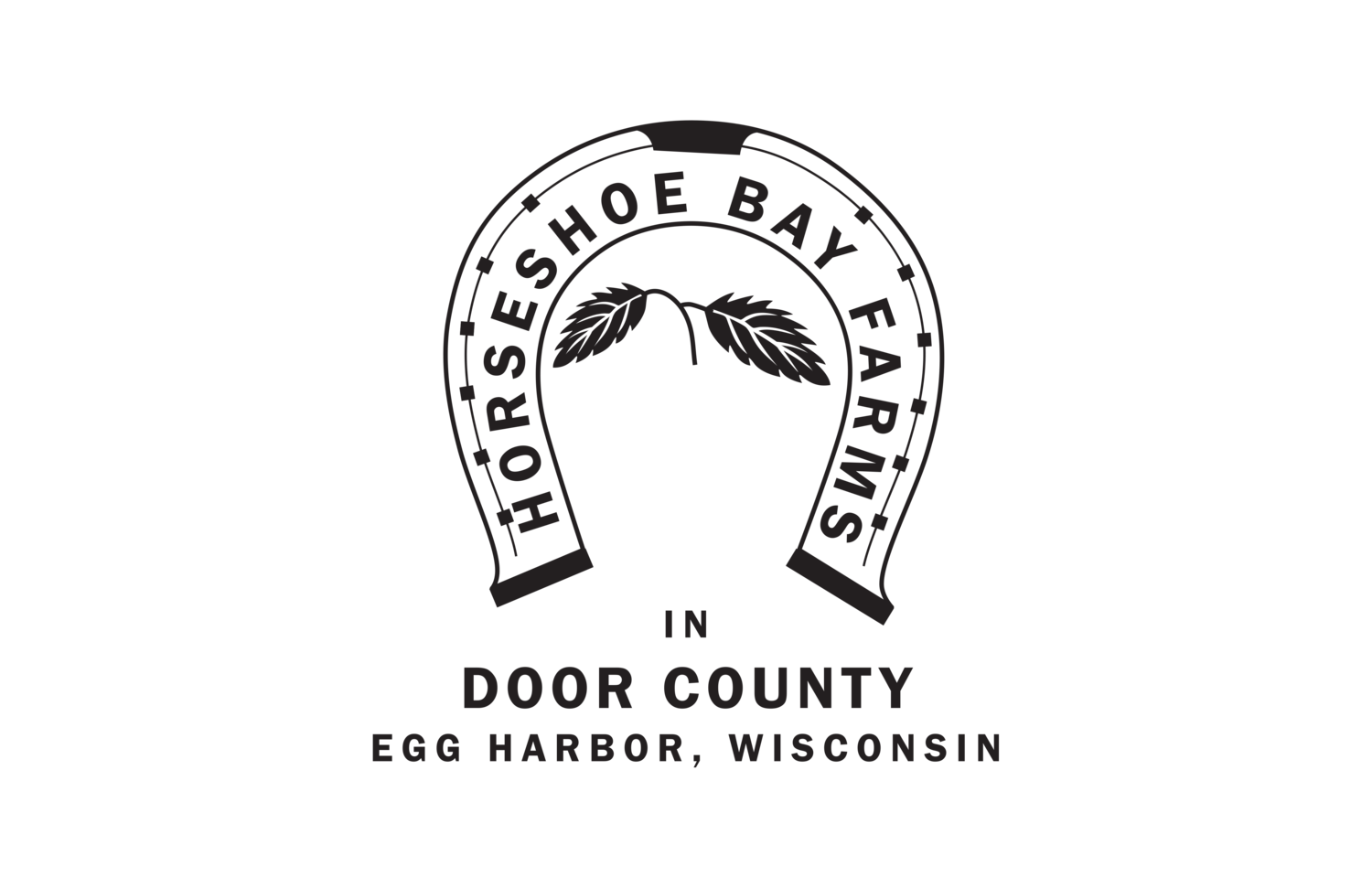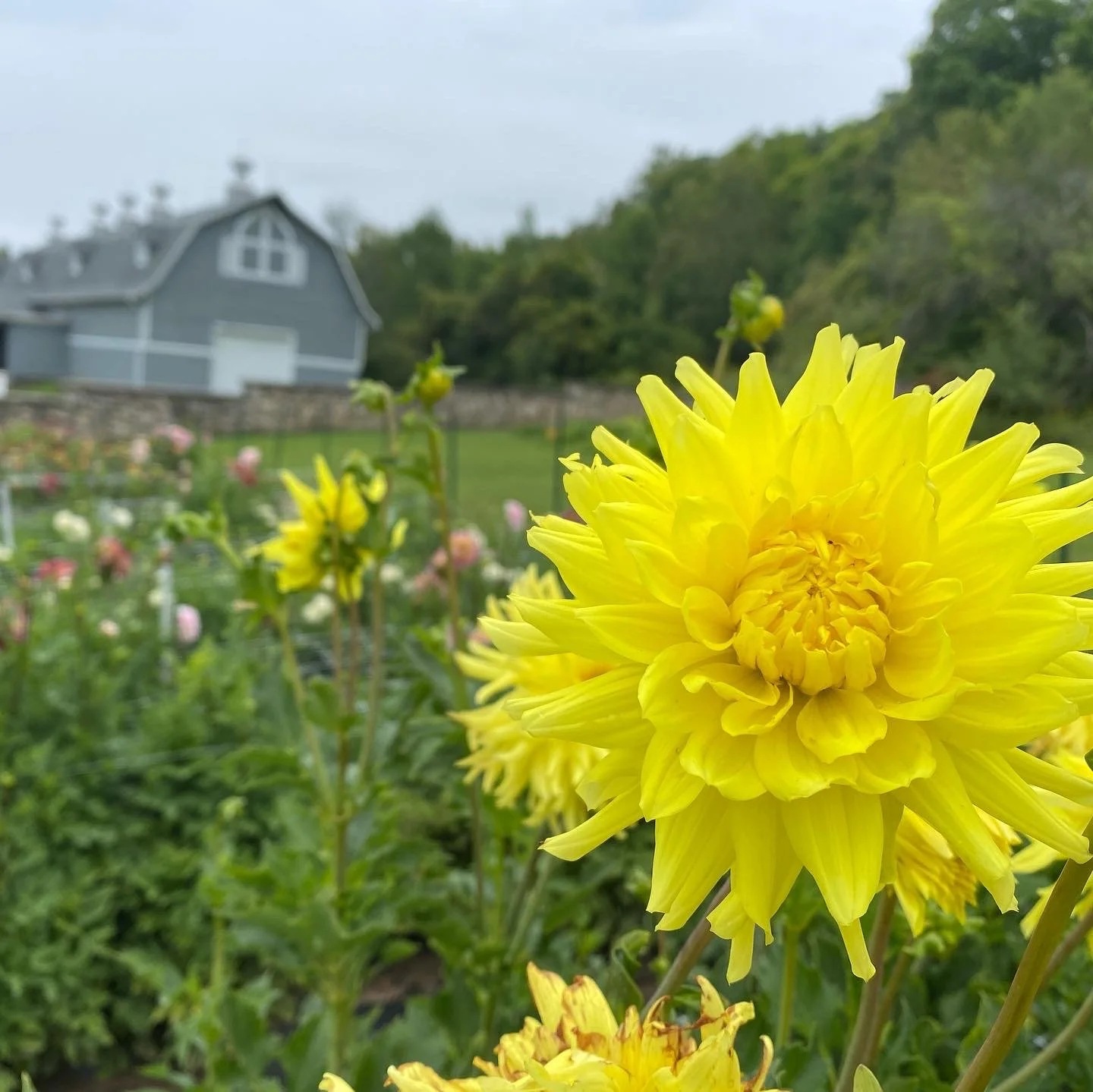Horseshoe Bay Farms
920 - 495 - 9988
info@horseshoebayfarms.org
Welcome to the latest edition of the Horseshoe Bay Farms newsletter! We're thrilled to bring you up to speed on all the exciting developments that unfolded in the 2024 season!
A Wedding on the Farm
We had a very special event on the farm this September that will forever hold a special place in our hearts! Our very own Dan tied the knot with his beautiful bride, Claire. The weather couldn’t have been more perfect—clear skies, warm sunshine, and a garden in full bloom, creating a picturesque backdrop for their celebration.
While we don’t typically host weddings on the farm, we made a special exception for Dan, who has done so much for Horseshoe Bay Farms over the years. It was truly a joyous occasion, and we couldn’t be happier for Dan and Claire as they begin this new chapter of their lives together.
Horseshoe Bay Farms Board of Directors
Lori Nicholas, President & Treasurer
David Nicholas, Vice President
Dan Harnois, Secretary
Andy Gill, Director
Mary Kay Braza, Director
2024 Volunteers and Visitors
The 2024 season truly was one for the books! This summer, we had the incredible privilege of welcoming nearly 4,000 visitors to the farm, and we hosted over 400 scheduled tours—each one an opportunity to share the magic of our farm with people from all walks of life.
We are deeply grateful to all the volunteers who dedicated their time, energy, and passion to help make this season such a success. From mulching the garden in the spring to supporting our many events throughout the summer, and providing insightful tours to visitors, our volunteers were an essential part of everything we accomplished this year.
Each day brought new challenges and opportunities, and without the hard work and enthusiasm of our volunteers, none of this would have been possible.
In total, our amazing volunteers contributed a staggering 741 hours of hands-on work this season. We are truly blessed to have such a dedicated and hardworking group of people who share in our mission and help bring it to life.
Their commitment and spirit have made a lasting impact on the farm, and for that, we are eternally thankful.
Volunteer Spotlight: Mary Theisen
This year, we’d like to give a very special shout-out to one volunteer who truly helps make Horseshoe Bay Farms a more beautiful place—Mary Theisen. Mary’s dedication and hard work in the garden, often alongside Roy, have made a lasting impact on the beauty of our grounds. Her countless hours of planting, tending, and nurturing the garden are evident in every blooming flower.
Mary always brings a warm smile and an infectious energy to everything she does. Whether she’s working in the garden or simply chatting with visitors, her positivity is a true gift to the farm. We are so grateful for all she does to help make Horseshoe Bay Farms a place of joy and beauty for everyone who visits!
The Bountiful Veggie Garden
This season the vegetable garden has been a huge success! We've harvested a bountiful array of tomatoes, cucumbers, squash, scarlet runner beans, and more, each bringing its own unique flavor and satisfaction.
Looking ahead, we're excited to add a new arbor and garden beds along the fence line, giving us more space to experiment with new varieties.
This fall, we also built our own farmstand, and it's been a hit with the community, with positive feedback all around.
The Enchanting Flower Garden
This year, our flower garden was as stunning as ever, though not without its challenges. We planted over 325 dahlia tubers, including 10 new varieties. While many of the flowers bloomed beautifully, we did experience some setbacks. The bloom was a bit later than usual, and unfortunately, not all of them displayed the vibrant colors we had hoped for. Many gardens struggled with similar delays and uneven blooms, likely due to the unpredictable weather patterns we’ve had this year.
New Fun Facts Uncovered
This summer, we had an exciting time uncovering new historical facts, thanks to the hard work of our incredible interns! It's truly special to keep discovering new pieces of our farm's history, and we're so grateful for the dedication they’ve shown in helping us piece it all together. In 1919, Murphy Farms made a significant expansion by purchasing the 200-acre Roscoe farm for $30,000, increasing the farm’s total holdings to 700 acres. That same year, the farm received a groundbreaking shipment of 28 full-blooded Holstein cows, marking one of the first express shipments of cattle to the region. By 1921-1922, Murphy Farms gained national recognition as its cows began breaking records for milk and butterfat production. One standout, Lady Garcia Hengerveld, became especially famous for producing an impressive 513 pounds of milk in just seven days. These milestones were pivotal in establishing the farm’s legacy as a leader in agricultural innovation. We simply cannot thank our interns enough for their hard work and passion, as each new discovery deepens our connection to the rich history of Murphy Farms.
Wisconsin Historical Society
This past summer, we welcomed an unexpected but special group of visitors to the farm—the Wisconsin Historical Society! As part of their historic road trip across the state, they made a stop to learn about the rich history of our farm, with a particular focus on our cherry-picking days. It was a pleasure to share stories and insights with them, offering a glimpse into the farm’s past.
The Wisconsin Historical Society is in the process of building a new museum in Madison, set to open in 2027, featuring exciting new exhibits that will highlight Wisconsin’s rich history. We were thrilled to assist them by sharing information about Door County and its history, and we’re excited to see how our peninsula will be represented in their future exhibits.
Boys and Girls Club
Oh boy, what a fantastic time the Boys and Girls Club had on the farm this summer! Over the course of three fun-filled days, we welcomed three different age groups. The kids took part in a thrilling scavenger hunt, competed in Olympic style relay races, and even got the chance to try some unique and adventurous foods.
Our oldest group had the opportunity to taste fried green tomatoes, while the younger groups rolled up their sleeves to learn the art of pickling—an experience they won’t soon forget! To make the day even more special, each group took home a jar of their very own homemade pickles as a souvenir. The kids got to taste-test their pickling creations, which was a fun and rewarding way to experience the fruits (or vegetables!) of their labor.
We are so grateful for our continued our partnership with the Boys and Girls Club and can’t wait for them to return next year!
The Magic of Stickwork
This summer, we introduced an exciting new event on the farm, and it turned out to be an absolute blast! Our Stickwork Celebration was a day filled with fun, laughter, and magic, and we couldn’t have asked for a better turnout. The event featured a variety of activities designed to entertain and delight visitors of all ages, including a charming petting zoo, an enchanting magician show, and an array of playful games that kept everyone on their toes.
One of the highlights of the day was seeing all the kiddos, many of whom arrived dressed in their most creative costumes, adding to the whimsical, magical vibe of the event. It was the perfect way to celebrate the art of Stickwork while creating a fun, family-friendly atmosphere where everyone could join in the festivities.
We were thrilled to welcome over 200 visitors for this new event, each bringing their own energy and excitement to the celebration. The smiles, laughter, and sheer joy that filled the air were contagious, making it a truly special day for everyone involved.
Check Out Our New Merch
We’re excited to announce some fresh new merchandise available online! Whether you’re looking for the perfect present or treating yourself, we’ve added a variety of cozy, seasonal items to our online store.
From stylish Quarter Zips and comfy long sleeves to our classic tees, there’s something for everyone. These items are not only great for layering up, but they’re also ideal for staying warm during those chilly Wisconsin winters!
New this Fall we added our own HSBF logo’d wine and pint glasses. Our glasses are nicely packed in gift box, ready to make the perfect gift. Don’t miss out on our many seasonal options—shop now and get ready to cozy up in style!
Garden Club Visits
Horseshoe Bay Farms had the distinct honor of welcoming two amazing garden clubs this season—the Garden Club of Greater Milwaukee and the Green Tree Garden Club. Both groups were treated to a historic tour of the farm, followed by a delightful garden showcase that highlighted the beauty of our space.
It was incredibly exciting to meet and engage with such passionate garden enthusiasts, and we were thrilled to share the unique charm and history of the farm with them.
Miriam Erickson
Unfortunately, this year we lost someone who was truly vital to the farm and its history—Miriam Erickson. She was a beloved member of the Door County community and her family’s contribution to the farm’s legacy will never be forgotten. While she will be deeply missed, we will not forget the memories she helped preserve.
Welcome Center & Mercantile
Opening June 1st
Wednesday – Sunday
10 AM – 3 PM
Guided Tours
Opening June 1st
Wednesday – Sunday
11 AM and 1 PM
Hours and Times Subject to Change
Check Our Website
for Availability and Register
www.horseshoebayfarms.org
920 – 495 - 9988
P.O. Box 296
7212 Horseshoe Bay Rd.
Egg Harbor, WI 54209











